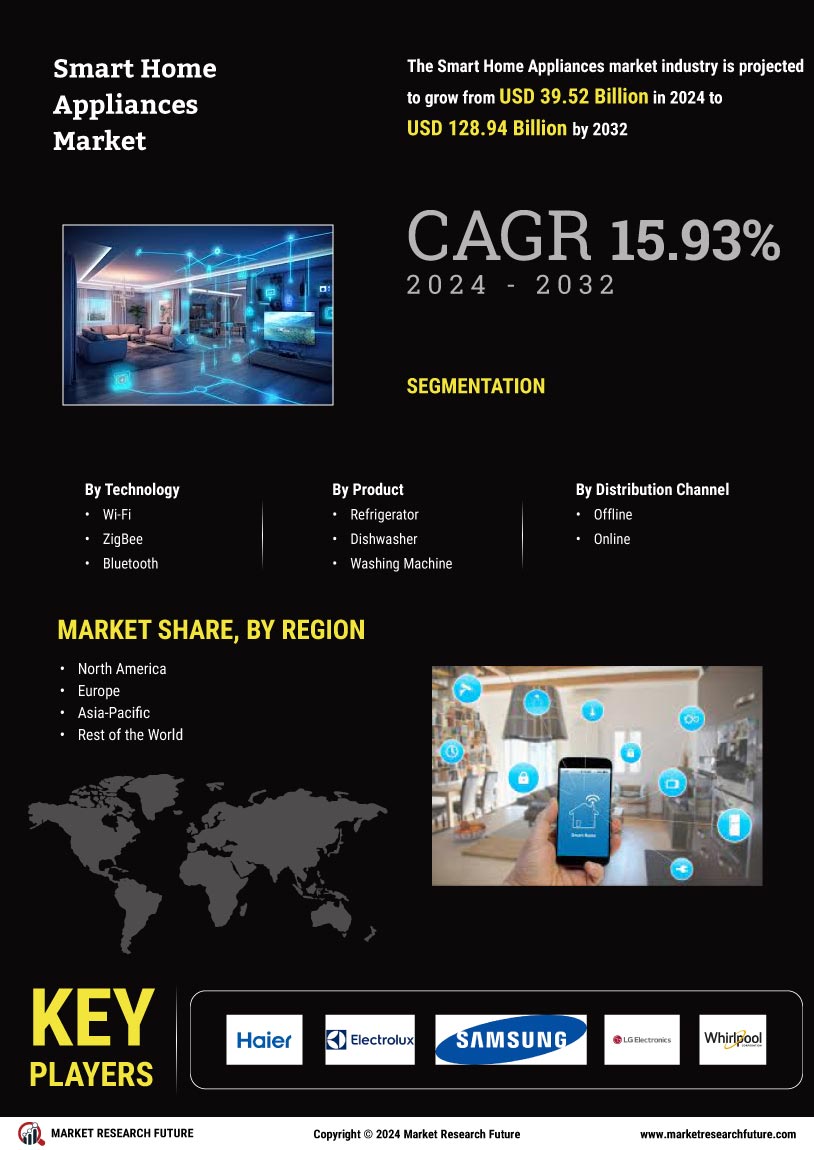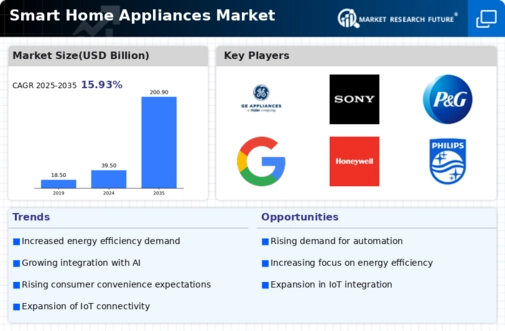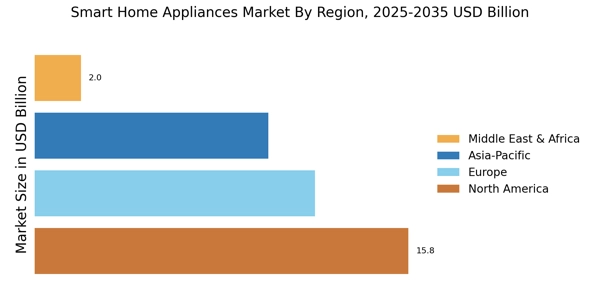The Smart Home Appliances Market is currently characterized by a dynamic competitive landscape, driven by rapid technological advancements and evolving consumer preferences. Key players such as Amazon (US), Samsung (KR), and Google (US) are at the forefront, each adopting distinct strategies to enhance their market positioning. Amazon (US) continues to leverage its extensive ecosystem, integrating smart home devices with its voice assistant, Alexa, thereby fostering a seamless user experience. Samsung (KR) emphasizes innovation through its SmartThings platform, which connects various devices, while Google (US) focuses on enhancing its Nest product line, aiming to create a more interconnected home environment. Collectively, these strategies not only intensify competition but also push the boundaries of what smart home technology can achieve.
In terms of business tactics, companies are increasingly localizing manufacturing and optimizing supply chains to enhance efficiency and reduce costs. The market structure appears moderately fragmented, with a mix of established players and emerging startups. This fragmentation allows for diverse offerings, yet the influence of major companies remains substantial, as they set trends and standards that smaller entities often follow.
In August 2025, Amazon (US) announced the launch of a new line of energy-efficient smart appliances, which aligns with the growing consumer demand for sustainability. This strategic move not only positions Amazon as a leader in eco-friendly technology but also reflects a broader industry trend towards energy conservation. By integrating smart technology with energy efficiency, Amazon is likely to attract environmentally conscious consumers, thereby enhancing its market share.
In September 2025, Samsung (KR) unveiled its latest AI-driven washing machine, which utilizes machine learning to optimize washing cycles based on user habits. This innovation underscores Samsung's commitment to integrating artificial intelligence into its product offerings, potentially setting a new standard for user convenience and efficiency in the smart home sector. Such advancements may also serve to differentiate Samsung from competitors, as consumers increasingly seek products that offer personalized experiences.
In October 2025, Google (US) expanded its partnership with various home security companies to enhance the capabilities of its Nest security systems. This strategic alliance is indicative of a trend towards collaboration in the industry, where companies recognize the value of integrating their technologies to provide comprehensive solutions. By enhancing its product ecosystem through partnerships, Google is likely to strengthen its competitive position in the smart home market.
As of October 2025, the competitive trends in the Smart Home Appliances Market are increasingly defined by digitalization, sustainability, and the integration of artificial intelligence. Strategic alliances are becoming more prevalent, as companies seek to combine their strengths to deliver innovative solutions. Looking ahead, it appears that competitive differentiation will evolve from traditional price-based competition to a focus on innovation, technological advancement, and supply chain reliability, thereby reshaping the market landscape.

















Leave a Comment